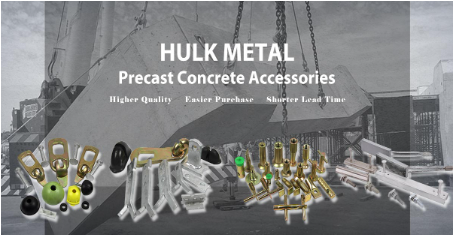
Best Practices for Installing Precast Concrete Accessories and Lifting Anchors
From pavers and retaining walls to planters and benches, precast concrete accessories provide versatile options for enhancing exterior spaces with aesthetics, functionality, and value. When working with precast components, following proper installation techniques is key for creating high-quality, long-lasting products. Lifting anchors are an important installation consideration, as they create secure attachment points for handling precast pieces. This guide covers recommended practices for installing different types of precast concrete accessories along with the use of lifting anchors.
Planning and Preparing for Precast Concrete Accessory Installation
Proper planning and preparation are the first steps toward success when installing precast concrete accessories
- Evaluate the site conditions to determine feasibility for proposed precast installations. Check for adequate space, appropriate terrain, soil stability, and utility locations.
- Acquire any required permits for installing precast concrete accessories from local authorities.
- Prepare the base and substrate according to specifications from the precast accessory manufacturer. Excavate and grade areas as needed.
- Have all necessary tools, materials, and equipment ready for the precast concrete accessory installation. This includes compaction equipment, laser levels, grout mixers, and drilling tools.
- Mark the exact positions for each precast concrete accessory. Include locations for any required lifting anchors.
- Implement necessary safety measures such as trench shoring, fall protection, and PPE.
Base Preparation and Installation for Precast Concrete Pavers
Precast concrete pavers should be installed on a 4-6 inch aggregate base:
- Excavate area and prepare a compacted gravel sub-base to support the pavers. Use a plate compactor to create a flat, stable surface.
- Set precast concrete pavers in the desired pattern, leaving uniform joints between each piece.
- Completely fill joints with polymeric sand, sweeping off excess sand from the paver surface.
- Mist water over pavers to set polymeric sand that fills joints. This prevents sand from washing out.
Techniques for Installing Precast Concrete Retaining Walls
Multi-step excavation and preparation enables proper retaining wall installation:
- Dig out and prepare aggregate base materials in lifts, compacting after each layered addition.
- Position first course of precast concrete retaining wall units on a prepared base. Check for level and correct wall alignment as additional courses are stacked.
- Use drainage fill, gravel, and geotextile filters behind the wall to facilitate water flow away from backfill soil materials.
- Include galvanized lifting anchor bolts securely embedded in the top surface of any precast wall units that will require future handling or manipulation.

Steps for Installing Precast Concrete Planters
Planter preparation focuses on creating a stable, level base:
– Prepare planter base using well-compacted gravel or aggregate mixture to minimize settling.
– Place precast concrete planter in desired location, verifying it is level on all sides and properly positioned.
– Backfill around planter sides with planting soil mix, leaving any drainage holes open at the bottom per design.
Finishing Practices for Precast Concrete Accessories
Proper finishing ensures precast concrete accessories remain protected and attractive:
– Clean all surfaces after installation using pressure washing to remove dirt, dust, and debris.
– Apply penetrating or water-repellent concrete sealer to enhance appearance and durability.
– Use properly mixed non-shrink grout or mortar to fill any visible joints, anchors, or mounting points smoothly.
– Inspect installations periodically and re-apply protective sealers as needed. Address any cracks, spalling, or damage issues promptly.
By following the manufacturer’s instructions and these installation best practices, precast concrete accessories and associated lifting anchors can be installed successfully to provide lasting aesthetics, functionality, and value.







